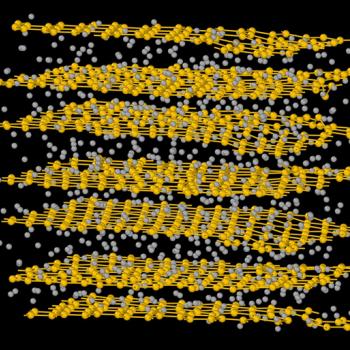Ranked Among the Best Global Universities for Physics
Ohio University is ranked among the Best Global Universities by U.S. News & World Report , with its physics program among the best in the world. Students explore yesterday, today and tomorrow in search of a deeper understanding of the natural world—from the mysteries of dark matter to the smallest machines possible, from the complexity of life to nature's strongest forces.
Learn Why Physics & Astronomy Ranks!
The Physics & Astronomy Department offers five different bachelor’s programs in physics and astrophysics, including four B.S. degrees and one B.A. major. The department’s graduate programs include a Ph.D. in Physics as well as two master’s degrees.
-
Researching the CosmosFrom the mysteries of dark matter to the secrets hidden in our own solar system, astrophysics probes the galaxy of unanswered questions.
-
Nanoscience ResearchersAt the size scale of an atom, researchers manipulate nano-particles to explore the world of quantum mechanics and to build the smallest machines possible.
-
Nuclei and Particles ResearchBiophysicists study the complexity of life by using the laws of physics and the power of math to analyze patterns in living things, from epilepsy to signal processing.
-
Reach for the StarsThe nuclear force is the strongest found in nature. From questions of how protons and neutrons are bound in nuclei (or neutron stars) to the interactions of quarks and gluons, this is strong stuff.
Drischler receives 2024 NSF CAREER Award
Researchers discover way to make essential biotesting more affordable
Physics & Astronomy Events
Why OHIO's Physics & Astronomy Program is Among the Best in the World
World-Class Research
The Physics & Astronomy Department at Ohio University provides students — both graduate and undergraduate students — the opportunity to engage in world-class research in areas ranging from nuclear astrophysics to quantum materials.
Physics & Astronomy faculty have built a solid research infrastructure over the years, with strong support from external agencies, averaging $3.6M per year.
Each year, faculty publish on average 140 research articles and receive more than 10,000 citations.
Research Experiences for Undergraduates
The department also offers great experiential learning opportunities and internships for students in bachelor’s physics programs to conduct research, with 90% of physics undergraduate students having done at least one research internship in a faculty member’s lab — outside of ordinary coursework — by the time they graduate.
More than 100 Years of Physics Graduate Degrees
The Physics & Astronomy Department awarded its first M.S. in physics degree in 1912 and its first Ph.D. degree in 1963 . The program maintains a dynamic graduate physics program, offering degrees with emphasis in several different research areas: Astrophysics, Biological Physics, Condensed Matter Physics and Surface Science, Nanoscience, and Nuclear and Particle Physics.
Degrees offered include an M.A. in Physics, an M.S. in Physics, and a Ph.D. in Physics. Our primary goal at the graduate level is to provide a broad and excellent education in advanced physics and astronomy, which prepares our graduates with the tools to address open problems for the remainder of their careers, gives them training in state-of-the-art techniques and approaches in the discipline, and prepares them to teach physics and astronomy at the university level.
Financial Support for Graduate Students
Total graduate student enrollment has averaged approximately 70 students over the last seven years. All our Ph.D. are students supported on stipends and tuition waivers up through their fifth year with typically about 30 students supported on Teaching Assistantships during their first one or two years, while the rest are supported on Research Assistantships from faculty grants and fellowships.
Successful Alumni
Over the years our alumni have gone on to successful careers in academia, industry, and government , and we continually strive to modernize and adapt to the needs of our students and the discipline. Our graduate program furthers the goals of Ohio University by providing high-quality and distinctive graduate education, closely linked to nationally prominent research efforts.
Ground- and Space-Based Astrophysics Observations
Observational work by our Astrophysics faculty involves ground- and space-based observations of astronomical objects across a wide range of wavelengths, with active programs on the James Webb Space Telescope, Hubble Space Telescope, Swift Gamma-Ray Burst Mission, Chandra and XMM X-ray Observatories, and the Cerro Tololo Inter-American Observatory.
Ohio University is a partner in the MDM Observatory at Kitt Peak, Arizona, which provides guaranteed access to research-quality telescopes at one of the best astronomical sites in North America.
Edwards Accelerator Lab
The department maintains a 4.5MV high-intensity van de Graaff accelerator on campus in the Edwards Accelerator Lab , a unique and highly productive facility within the state used for low-energy nuclear physics and materials science experiments. It regularly draws users from other universities and national labs.
Internationally Renowned Faculty
Physics & Astronomy faculty are highly regarded within their professional areas, receiving many awards and recognitions including being named Fellows of the American Physical Society, receiving National Science Foundation and Department of Energy Early Career Awards, and with a faculty, Madappa Prakash, receiving the American Physical Society Hans A. Bethe Prize in 2021.


